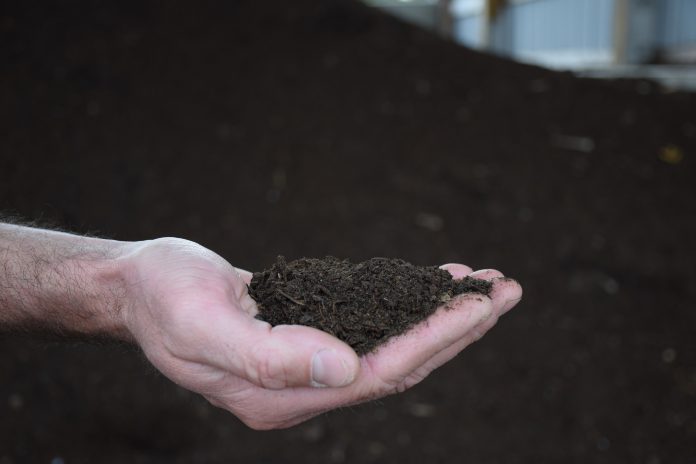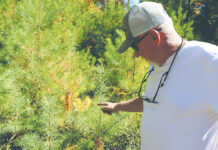
With 2020 behind us, most of us were hopeful for better times in 2021. But sadly, things did not magically improve with the flip of the calendar. Many of the issues that plagued us in 2020 are still looming. And it’s hard to stay encouraged when we are constantly bombarded with reminders that we are a divided nation.
Is there a way to change that dialogue and redirect our focus toward something more unifying? If we found some common ground, could we re-learn how to work together?
When seeking answers to difficult questions we are often encouraged to look up. No disrespect is intended with this next suggestion, but if we want to find our common ground, we should look down. Our common ground is literally right beneath our feet! Humans are inextricably dependent on soil, and yet we treat our soil like dirt.
The reality is, without healthy soil, the issues that engage us and enrage us become equally moot. Soil is the great equalizer. Human reliance on soil is not influenced whatsoever by race, religious affiliation, economic status, gender or which nation holds your citizenship. Human dependence on soil is fundamentally about biology.
Let’s revisit what we learned in primary school: to survive animals need air, water, food and shelter. Soil plays an important role in each of these needs.
Air
Poorly managed soil (soil that is frequently disturbed or left without vegetation) contributes to poor air quality by increasing dust and particulate matter in the air. On the flip side, soil that is well-managed (infrequent disturbance and continually vegetated) contributes to improved air quality by reducing airborne particulate.
That vegetation is also taking in carbon dioxide and releasing the oxygen that we rely on while also playing a vital role carbon sequestration and carbon cycling.
Water
Poorly managed soils are highly erodible and are carried away through rain events to the nearest receiving body of water. Soil particles in water are referred to as sediment, and are the number one pollutant found in Ohio’s waterways.
Sediment retains soil nutrients (such as nitrogen and phosphorus), and they are also delivered to our waterways, where they disrupt stream biology and increase aquatic plant and algal growth.
On the other hand, well-managed soils increase the soil organic matter and microbial diversity in the soil. Sometimes referred to as a micro-herd, the combined biological processes of soil microbes promote soil aggregation which increases water infiltration and leads to reduced flooding and improved ground water reserves.
Food
Food production is intrinsically connected to the soil. According to the Food and Agriculture Association of the United Nations, an estimated 98.8% of the daily calories consumed by humans comes from the soil. Population growth has fueled the global demand for food.
Not only are more people eating, but people are also eating more. The average caloric intake per capita has increased from 1400 kcal per day in 1963 to 3100 kcal in 2013. Global studies indicate that an overwhelming majority of food production acreage is not being sustainably managed and that we will not be able to meet future food demands without significant changes.
Shelter
Our housing materials — mud, stone, brick, wood and straw — are all directly connected to the soil. Then we mine, pump, extract and excavate additional construction materials that make up steel, iron, glass, concrete and asphalt.
Bad news
Our common ground is degraded — almost all of it.
Major forms of this degradation include the loss of organic matter and the release of greenhouse gases, the over-application of fertilizers, erosion, contamination, acidification, salinization and loss of genetic diversity.
This ongoing soil degradation is decreasing the long-term ability of soils to provide humans with services, including future food production, and is causing environmental harm.
Stand
Our degraded common ground requires action. Many farmers are already making efforts to improve soil health. But suburban homeowners and urban dwellers need to be part of the solution, too. Good choices in managing our common ground can make a difference.
Consider reducing the size of your lawn and the amount of fertilizer applications you use to grow turfgrass and generously adding native landscape plants, like woody shrubs and perennials that will keep soil covered, recycle nutrients, build soil organic matter and provide wildlife habitat, and will provide clean air and water services with no additional effort.
If you are unwilling to reduce your lawn, you can also plant a native tree. Trees are rock stars when it comes to soil health and ecoservices.
Even if you are a renter and have no place to plant a tree, you can check with your park district or soil and water conservation district for community planting projects. Or, consider a donation to organizations that are doing this work. Check with your local park district, conservation agency or even national efforts like the Arbor Day Foundation.
You can also reduce waste. Per capita, Americans are generating nearly twice as much waste as we did 50 years ago. Our landfills are full of these individual choices. Active landfills are a constant source of soil disturbance and they generate methane, a powerful greenhouse gas.
Imagine all of the other uses that same land could support: agriculture, housing, wildlife, woodlands, meadows, recreational activities. Pretty much any other use seems better than a landfill. There is no honor in waste.
Instead of just standing on common ground, isn’t it time you make a stand for it?











